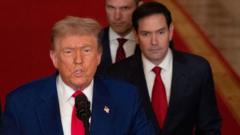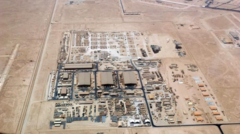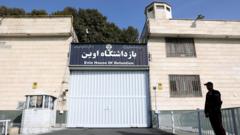On June 24, 2025, Israel and Iran officially agreed to a cease-fire following escalating tensions and military actions over the preceding weeks. The announcement, attributed to President Trump, was made just before Israel's confirmation. This agreement marks a hopeful turn towards peace, as both nations have suffered casualties and destruction.
Israel and Iran Reach Cease-Fire Agreement Amid Tensions

Israel and Iran Reach Cease-Fire Agreement Amid Tensions
The cease-fire, announced by President Trump, aims to halt escalating violence between Israel and Iran, providing a potential path towards peace in the region.
Israel and Iran have collaboratively decided to implement a cease-fire following a tense period of military confrontations that raised concerns of a broader conflict in the Middle East. Announced early on June 24, 2025, President Trump shared that both nations had consented to halt hostilities, signaling a potential de-escalation of violence that had persisted for over a week.
This truce materialized against the backdrop of severe military operations, including missile exchanges that caused substantial loss of life and damage to infrastructure. Reports indicate that four individuals have died in Israel due to Iranian missile strikes, while the Iranian side has also faced significant military actions from Israeli forces. Images from the conflict reveal severely damaged buildings, underscoring the intense nature of the attacks.
In the early hours after the cease-fire declaration, sirens erupted in various Israeli locations as new missile fire was detected, highlighting the precarious situation even as diplomatic efforts were underway. President Trump urged that the cease-fire should be respected and urged caution from both sides.
Iran's confirmation of the agreement followed an Israeli military statement, indicating a willingness to engage in a dialogue to end the violence. Both countries are under significant pressure to negotiate terms that could lead toward long-term peace, with mediators—including officials from Qatar—playing a crucial role in facilitating discussions.
While the cease-fire represents a respite for the embattled populations, there are lingering uncertainties regarding future intentions from both sides. Observers globally are turning their attention to this precarious pact, hoping that it leads to more comprehensive dialogue and a sustainable resolution to decades of conflict in the region. The hopes for peace are echoed in public sentiments, but skepticism remains regarding the actual implementation of the cease-fire and its longevity.




















